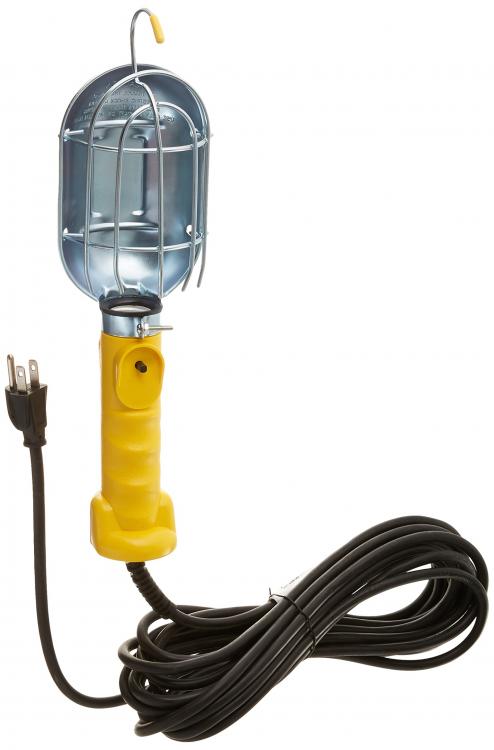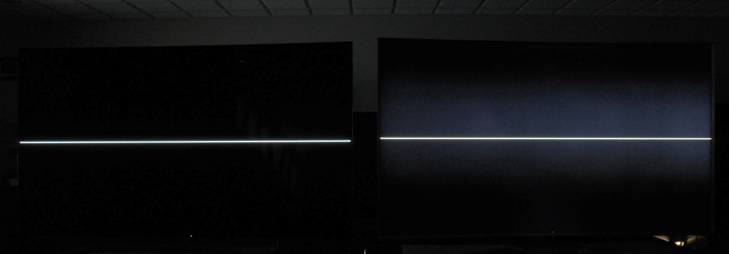-
Posts
6,355 -
Joined
-
Last visited
Content Type
Profiles
Forums
Articles
Everything posted by jonpais
-
I’d have to go along with that too.
-
both lenses have fast af, sharpness is comparable, bokeh will be similar - of course, build quality of the PL is much nicer. Color of the lumix may or may not match your 14-50 better. Personally, I’d get the leica.
-
How about just setting the camera on manual and using tap to focus. Super fast, accurate and no hunting. No stopping to re-focus. No pulsing.
-

LukiLink project turns smartphones into an HDMI monitor
jonpais replied to Andrew Reid's topic in Cameras
spot-on, Mark. -
@IronFilm that’s one impressive link!
-
since when is the PL 12-60mm f/2.8-3.5 anyway?
-
@teddoman In SDR, specular highlights have been compressed. The brighter specular highlights of HDR are more natural looking. The higher local contrast of HDR also increases apparent sharpness. An advantage of OLED televisions when compared to even the best backlit LCD displays for HDR content is the near absence of blooming around highlights, particularly when next to deep blacks. Even film stock has an anti-halation layer to minimize blooming. You may actually like this effect, but you don’t necessarily want your display adding this artifact where there is none in the original footage.
-
exactly, which is why we don’t need mechanical lenses for video.
-
That’s good to know - but the lack of hard stops and short focus throw make this lens difficult to recommend for video work where manual focus will be used extensively.
-
??? that í not a test I’m afraid. https://www.lensrentals.com/blog/2016/03/mythbusting-parfocal-photo-zooms/
-
This has been posted in the gh5 af thread already. ?
-
I would wager that it is not parfocal.
-
The V-Log looks a bit muddy to me in this particular video when compared side by side with HLG.
-
What we have to consider is the entire process - from capture to finishing to delivery to distribution. Screen shots may be misleading because h264 is meant to be viewed as a moving image. A tiny bit of innocuous noise in a screen grab may be annoyingly obvious when dancing about when projected in a theater or on a computer monitor. Noise may also be aggravated when uploading to video sharing platforms. On the other hand, it could be mitigated by downscaling from 4K to 1080p. Noise will be amplified by the higher local contrast of HDR television. So there are a host of considerations to take into account.
-
Cameras and display technology go hand in hand. rec709 has got nothing whatever to do with the 35mm film look. It is a standard developed for HD television. Time to move on.
-
But it’s not all about pushing and pulling! It’s about obtaining better image quality than rec709. Which you denied just moments earlier. And you go on about shooting at higher ISOs introducing noise as though only you understand that. And contrary to your distorted version of reality, the reason Sony ‘didn’t go into color loss’ is because Sony has determined that SLog produces more vibrant color and dynamic range.
-
cool, happy i could be of some help. best of luck on your trip.
-
Here you go.
-
Not so! They did want to exceed the confines of rec709. No mention of pushing or pulling of film like the old days. The idea is to capture more of the sensor information during recording and greater flexibilty in post to achieve the filmmaker’s creative intent. Sony takes pains to point out the benefits of shooting in a wider color gamut than rec709. Their goal, and that of most manufacturers today, is to surpass the quality of 35mm film. Why do you persist in making up stories to suit your world view? From Sony’s website: The evolution of camera technology means that the sensors in modern cameras are now capable of matching, or even surpassing, the quality of 35mm film. The problem is that existing video formats don’t support the vast amount of information captured by a modern camera sensor. The result: reduced dynamic range and colour information. S-Log is a gamma curve designed to record and transmit as much of the information recorded by your camera’s sensor as possible. S-Log breathes life into your images by preserving the wide colour gamut and dynamic range recorded by the sensor. Then, in post-production, you create the image you want as part of the grading process, with greater artistic control over the finished product. CAPTURE A WIDE RANGE OF TONES The wide tone area captured by S-Log makes it especially effective when shooting subjects which tend to experience loss of details in shadows or overblown highlights. Scenes which were impossible to shoot before, such as those with strong sunlight and dark shadows can be captured in far more detail. SHOOT IN A WIDE COLOUR GAMUT Normal video footage is shot in the REC.709 colour gamut, but material recorded in S-Log is recorded in the much wider S-Gamut colour space. Put simply, the wider the colour gamut, the more colour information can be recorded and the more vibrant and realistic your images will look. MORE INFORMATION, MORE CONTROL S-Log captures far more information than standard REC.709 footage can record, giving you more control over the finished image in post-production. Instead of exposing for highlights or shadows when shooting, you can capture all of this information and choose how you want to display it later.
-
A boy was found dead hanging from a tree in deeply segregated Mississipi - lynching mob - a horde or throng of people mob lynching by the media is a gross misrepresentation. One seriously unfavorabe review is not a mob. And not a single person in the comments section of Cinema5D’s test agreed with the findings. This is rewriting history. It might be more challenging to prove that the media ignored the camera. I recall reading many positive reviews at the time the NX1 was released. In fact, the camera received glowing reviews from some of the most respected names in the business. It would be an even greater challenge to prove the NX1 was killed by lack of attention. Many cameras continue to be produced by much smaller companies than Samsung. Kinefinity. The LS300. Cameras which receive next to no notice whatsoever. What killed the NX1 was not mob lynching or lack of media attention, but Samsung’s decision to withdraw from the consumer camera market space. Photographers do not easily switch brands overnight when they have thousands of dollars invested in glass, especially a system with little or no compatibility. Let’s not overdramatize events. Samsung themselves said the reason for their discontinuation of the camera division was a gradual decline in demand for standalone digital cameras and camcorders. Aside from that, I enjoyed reading @Matthew Hartman‘s comments.
-
no, I started from the end. ?
-
Yes - do not follow his advice. If you shoot HLG for rec709 delivery, you’d be better off using the Leeming LUT. Joo’s skin tones look like lobsters on my iPhone. Anyway, saying any LUT can magically transform drab footage into something cinematic is misleading. Lighting is number one. ?
-
@maxotics I never said there were no trade offs. You can’t just assume that all filmmakers are completely unaware of how log works. Most everyone here has done testing with numerous profiles - any filmmaker worth his salt has. In just the past year, I’ve done extensive testing with no fewer than three. And apparently, most are voting with their eyes. I’m not quite sure what you mean by higher dynamic range may be more perceptible but that doesn’t mean higher quality. If anyone here wouldn’t like to capture 14 stops of dynamic range (equivalent to film stock - possibly much higher than a print that reaches the theater, who knows?) with no detectable degradation in color, please speak up!
-
i think there’s a lot of interest in the extra 1-2/3 stops of low light sensitivity. Not everyone can afford it, so they’ll be letting their GH5 cameras go.



